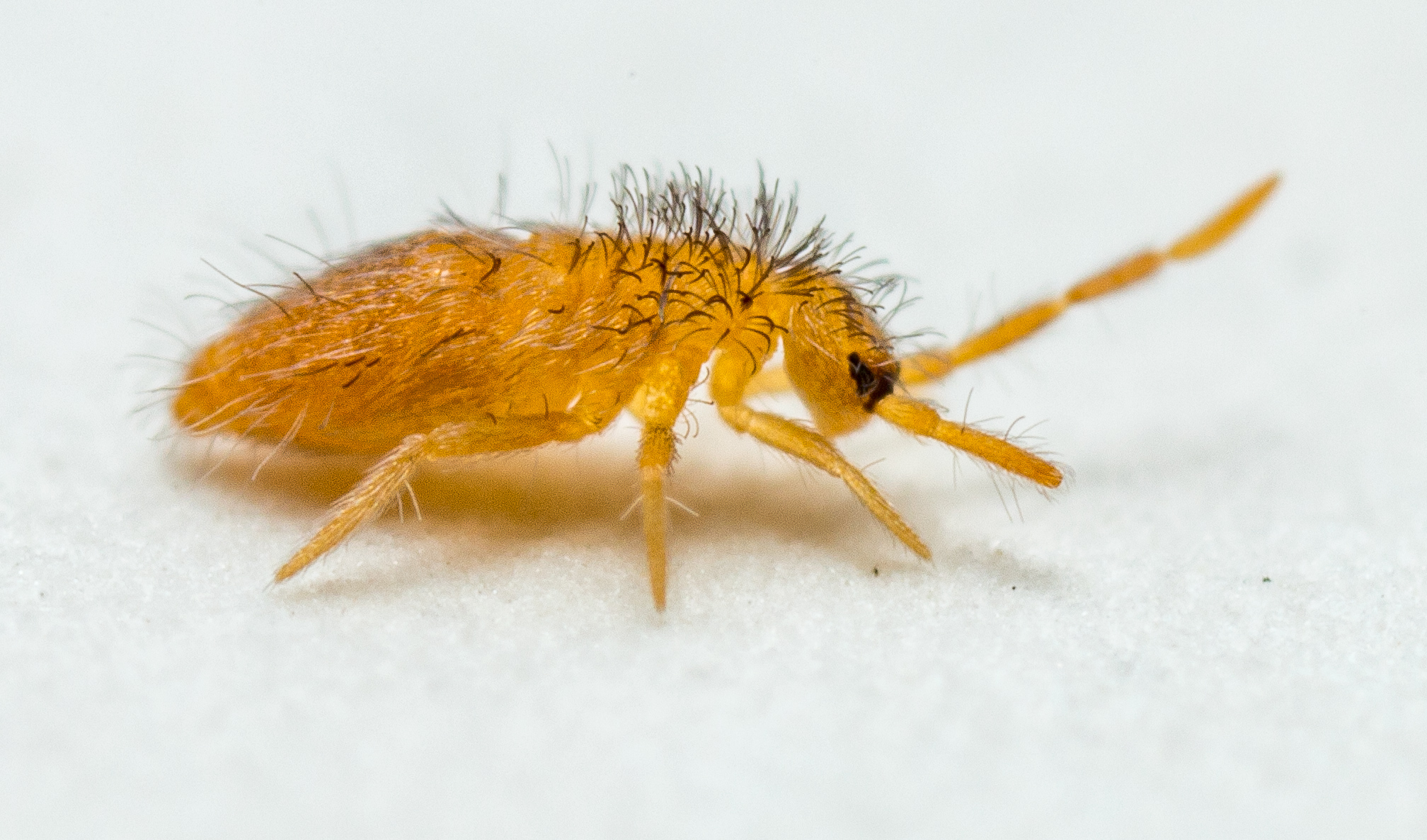Sentinel springtails: Thermal biology and environmental stress genomics of the Arctic springtail Entomobrya comparata
Authors
- C.R. Beet, School of Science, University of Waikato, Hamilton, New Zealand
- M.E. Duell, Department of Biology, Western University, London, Ontario, Canada
- I.D. Hogg, Polar Knowledge Canada, Canadian High Arctic Research Station, Cambridge Bay, Nunavut, Canada
- B.J. Sinclair, Department of Biology, Western University, London, Ontario, Canada, bsincla7@uwo.ca
Citation information
Beet, C.R., Duell, M.E., Hogg, I.D. and Sinclair, B.J. 2020. Sentinel springtails: Thermal biology and environmental stress genomics of the Arctic springtail Entomobrya comparata. Polar Knowledge: Aqhaliat Report, volume 3, Polar Knowledge Canada, p. 5–7. DOI: 10.35298/pkc.2020.01.eng
Article
The temperature and water in arctic soils are changing rapidly due to climate change. Soil is more than just dirt – it includes thousands of tiny animals that are essential to soil health and ecosystem function. Key among these are springtails (Collembola). Only a few millimetres long, they are one of the most common animals in the tundra, yet we know almost nothing about how they survive in the arctic environment.
We have begun to investigate this by determining how a common springtail from Cambridge Bay (Entomobrya comparata, see Figure 1) survives in high/low temperatures and dehydration in July. We found that this species is freeze-avoidant in the summer. This means that it can survive low temperatures as long as it does not freeze, and it is very good at avoiding freezing. We measured the supercooling point (i.e., the temperature at which they freeze, see Figure 2), and found an average of -12.9 °C. We also measured the "critical thermal maximum" (i.e., the highest temperature they can endure), and found an average of 38.3 °C. When exposed to a very dry environment, E. comparata can survive for more than 13.5 hours. Together, this shows that Entomobrya comparata is well-equipped to survive summer temperatures in Cambridge Bay. However, its cold tolerance is certainly not sufficient to survive an arctic winter.
We have also begun to explore the molecular mechanisms associated with environmental stressors in Entomobrya comparata. To do this, we exposed E. comparata to stressful, yet non-lethal, cold, heat, and dehydration stress, and stored the samples to allow us to determine which genes are associated with responses to these stresses. Currently, we have extracted messenger RNA – the raw material produced from DNA – from our samples, which will be sent to Génome Québec for analysis. We will then assemble the data into a transcriptome (i.e., a list of all of the genes that are present in the animal) and compare the treatments to determine which genes increase or decrease their expression (turn "on" or "off") with each environmental stress.
We have two main goals for our research. First, the facilities and location of the Canadian High Arctic Research Station (CHARS) makes it ideally suited for measuring the physiology of these springtails in the winter, which will allow us to understand how they tolerate extremely low temperatures, potentially revealing new mechanisms for survival. Second, we can use the differentially expressed genes as indicators for different kinds of environmental stress, allowing us to use them as markers for monitoring the health of the springtails, and their soil ecosystems, in a changing environment.
Many residents of the Arctic might be unaware of the diversity of small soil animals like springtails that are literally under their feet. Team member Clare Beet began to address this issue by taking some local children from Cambridge Bay on "springtail hunts" as part of her visit in Summer 2019, as well as giving a radio interview.

Figure 1: Close-up of an Entomobrya comparata springtail found near CHARS at Cambridge Bay. This individual is approximately 1.5 mm long. Photo credit: B.J. Sinclair

Figure 2: A Supercooling Point trace of two E. comparata individuals. The arrows indicate freezing exotherms which can be used to estimate the lowest temperature the springtail can survive.
Polar Knowledge Canada
For media inquiries, contact:
communications@polar-polaire.gc.ca
Page details
- Date modified: